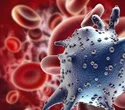Using Preclinical MRI to Image White Matter Injury

In pediatric patients with complex or severe congenital heart disease undergoing severe or cardiopulmonary bypass (CPB), there is a high risk for post-surgical newly developed white matter injury. Identified as the most common type of brain injury occurring among infants born premature, white matter injury is a type of brain injury typically identified as abnormalities on magnetic resonance imaging (MRI).
White Matter Injury in Pediatric Heart Disease Patients
In addition to white matter injury, ischemic reperfusion injury is a potentially life-threatening complication which can occur in high-risk patients undergoing CPB. Systemic inflammatory response syndrome is the result of CPB, with blood exposure to tubing, the cannulas, and the artificial oxygenator representing the primary pathogenesis.
Patients with coronary heart disease are often at a high risk for global cerebral ischemia during CPB surgery. In studies involving patients with white matter injury as well as reperfusion injury following surgical intervention for cardiovascular disease, investigators can understand the pathogenesis and the potential therapeutic targets for improving post-surgical care.
In vivo studies using the Bruker MRI system, which is commonly used in studies involving small animals, have specifically measured and identified white matter injury pathogenesis in the setting of cardiovascular disease. These high-resolution imaging tools, such as the Bruker BioSpin 7.0T, have allowed researchers to detect and understand white matter injury at the cellular level and how these injuries affect cardiac patients.
Additionally, researchers have been increasingly interested in understanding the measurement and prognostic capabilities of fractional anisotropy alterations induced by CPB to determine potential impact on white matter in infants and pediatric heart disease patients.
In a recent study, investigators have demonstrated that the reduction in the modifications of frontal cortex oligodendrocyte development may help improve neurodevelopmental impairment among patients with congenital heart disease. Investigators from this study performed imaging studies of porcine models with the Bruker BioSpin 7.0T imaging scanner.
Investigators randomized 3-week-old piglets to sham surgery (control, n = 3), 60-minute full-flow bypass at 34 degrees Celsius (n = 4), or 60-minute circulatory arrest at 25 degrees Celsius (n = 6). Animals were sedated prior to surgery, and researchers adhered to the National Institutes of Health’s Guide for the Care and Use of Laboratory Animals. Study personnel inserted 2 cannulas in the right femoral artery and vein to achieve continuous blood pressure monitoring, blood sampling, as well as continuous infusion.
Researchers ultimately started CPB, with perfusion achieved to approximately 10 minutes at 37 degrees Celsius of esophageal temperature. According to protocol, investigators chose either maintenance of full flow or 60-minute circulatory arrest.
Also, the heart was defibrillated during the rewarming period. Following 45 minutes of rewarming, the researchers weaned all animals from CPB. Near-infrared spectroscopy was used to measure tissue oxygen index.
Findings with the Bruker MRI System
After surgery, the investigators isolated brains via removal from the first vertebra followed by removal of the jaw up to the soft palate. The investigators incubated skulls overnight with 4% paraformaldehyde and 1% paraformaldehyde during a 1-week period.
Approximately 6 hours prior to imaging analysis, researchers allowed the skulls to reach room temperature. Imaging was performed with the Bruker BioSpin 7.0T scanner using a Bruker 72 mm volume coil. Researchers chose the Bruker MRI technology for its ease of use in small animal models.
Fractional anisotropy, which can facilitate quantification of white matter pathology organization at the macroscopic level, and specific cellular events were clearly demonstrated following CPB in this porcine model.
Imaging with the Bruker MRI system, in addition to the additional measurement tools utilized by the investigators, helped to directly measure the dynamic relationship between the clinical biomarker of fractional anisotropy and post-surgical cellular events.
Specifically, Bruker imaging and other measurement tools utilized in this research allowed investigators to detect region-specific white matter susceptibility to CPB-associated insults, demonstrating that regions of the frontal cortex white matter are particularly vulnerable following surgery. This study, therefore, validates previous research which suggests frontal cortex fractional anisotropy should be used as a clinically relevant biomarker for predicting post-CPB injury to white matter.
Clinical Relevance
The researchers believe that these findings indicate that practitioners should have a goal for “reducing and recovering alterations of oligodendrocyte development in the frontal cortex” in pediatric patients with congenital heart disease undergoing surgical intervention.
Conclusion
Bruker BioSpin provides effective MRI solutions for both preclinical and molecular imaging studies in small animal models. Imaging analysis allows investigators to view results at a cellular and molecular level, enabling a greater improvement in the quality of the findings and ultimately facilitating a greater understanding of living organisms, disease pathogenesis, or pharmaceutical efficacy.
High spatial resolution imaging, due largely to the combination of CryoProbe with high-field superconducting desktop magnets, represents a key benefit associated with the Bruker MRI system in animal research. To learn more about the many MRI systems available from Bruker, visit their website today.
Website: International Research Chemistry Awards
#Chemistry, #ChemistryResearch, #ChemicalScience, #ChemistryCommunity, #ChemistryLovers, #ChemistryLife, #ChemicalResearch, #ResearchChemistry, #ChemicalInnovation, #Science, #ScienceResearch, #ScientificResearch, #ResearchAndDevelopment, #ChemistryEducation, #ChemistryExperiments, #ChemistryLab, #ChemistryStudents, #ChemistryStudy, #OrganicChemistry, #InorganicChemistry, #PhysicalChemistry, #AnalyticalChemistry, #Biochemistry, #MaterialsChemistry, #TheoreticalChemistry, #AppliedChemistry, #MedicinalChemistry
Visit Our Website : researchchemistry.org
Nomination Link : x-i.me/rcanom
Registration Link : x-i.me/chereg
Member Link : x-i.me/rcmem
Contact us : Contact Us: contact@researchchemistry.org
Social Media Links
Instagram : www.instagram.com/chemistryaward
Twitter : x.com/Chemistryaward
Pinterest : in.pinterest.com/chemistrymails
YouTube :www.youtube.com/channel/UCVSQd1VJ7Ilo5JuIuixCDnA



Comments
Post a Comment